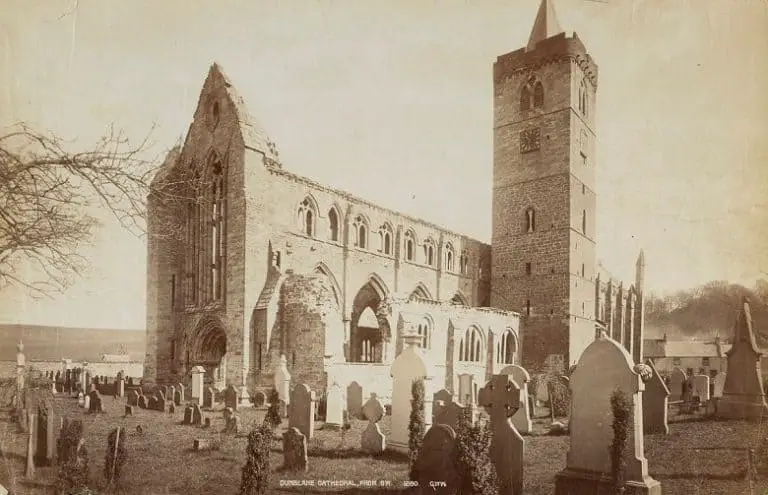King Of The Ohio Body Snatchers
Body snatching in America, especially Ohio, produced its own famous resurrection men, just as the practice did here in the UK.
Chris Woodyard, author of The Victorian Book of The Dead, is as fascinated with body snatching in America as I am with it here in the UK and so I was delighted when she agreed to write a guest post on perhaps one of America’s more famous resurrection men, ‘Old Cunny’, King of the Ohio body snatchers.
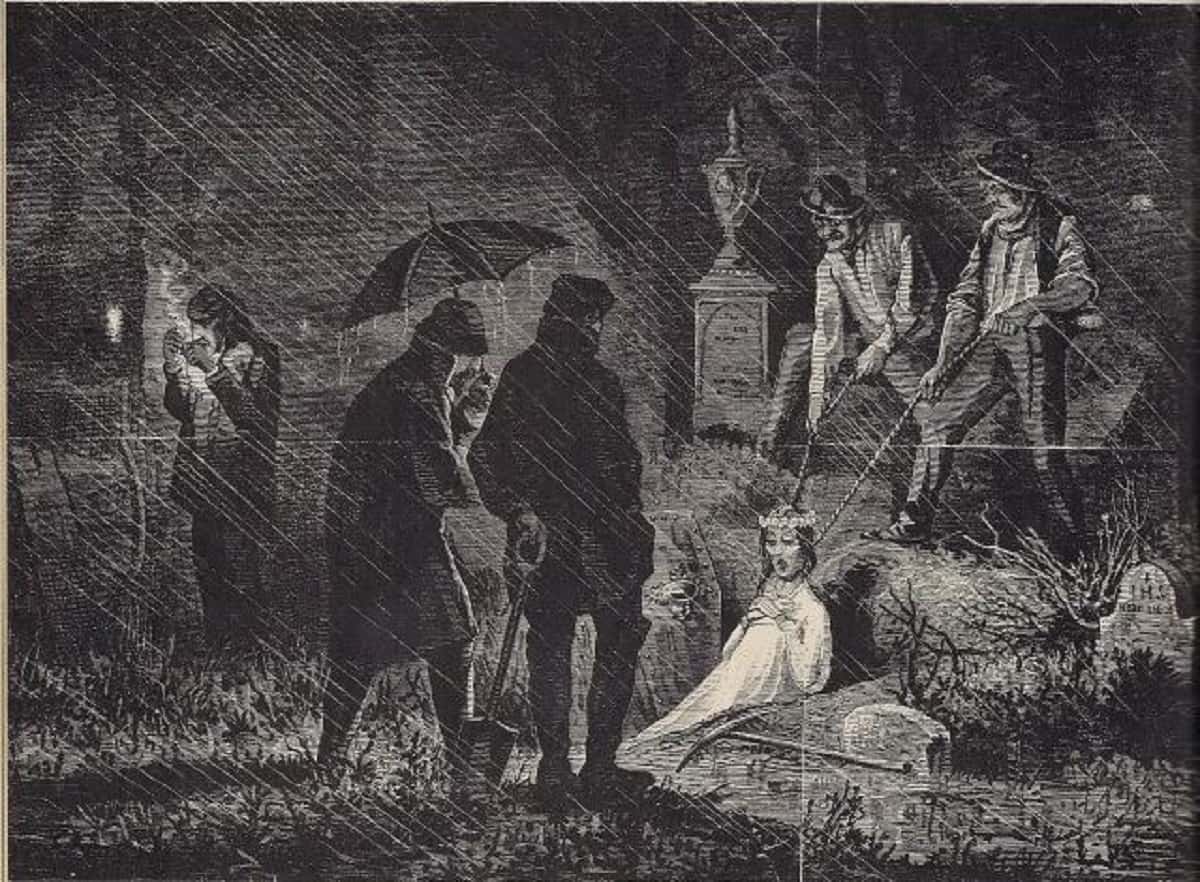
If our ancestors were terrified that they might be buried alive, they had an equally deep fear that their dead bodies would be resurrected, not on the Day of Judgement, but in the dead of night, by the body snatchers, to be sold to a medical school.
Resurrectionists, as they were called, with their ghoulish humour, would wait until someone was buried, then hurriedly dig down to the head of the coffin, break it open, and plunge a hook into the corpse under its chin or place a noose around its neck.
The corpse was then winched or hauled out of the grave, which was then refilled with no one the wiser and the corpse’s vital internal organs were not harmed, making it a valuable commodity for the medical school market.
Often corpses’ heads were skinned or identifying markings such as tattoos removed so identities could not be proven, should a medical school be raided. Bodies were pickled in alcohol or salt and shipped labelled “Pork” or “Beef.”
Body Snatching Laws In America & Ohio
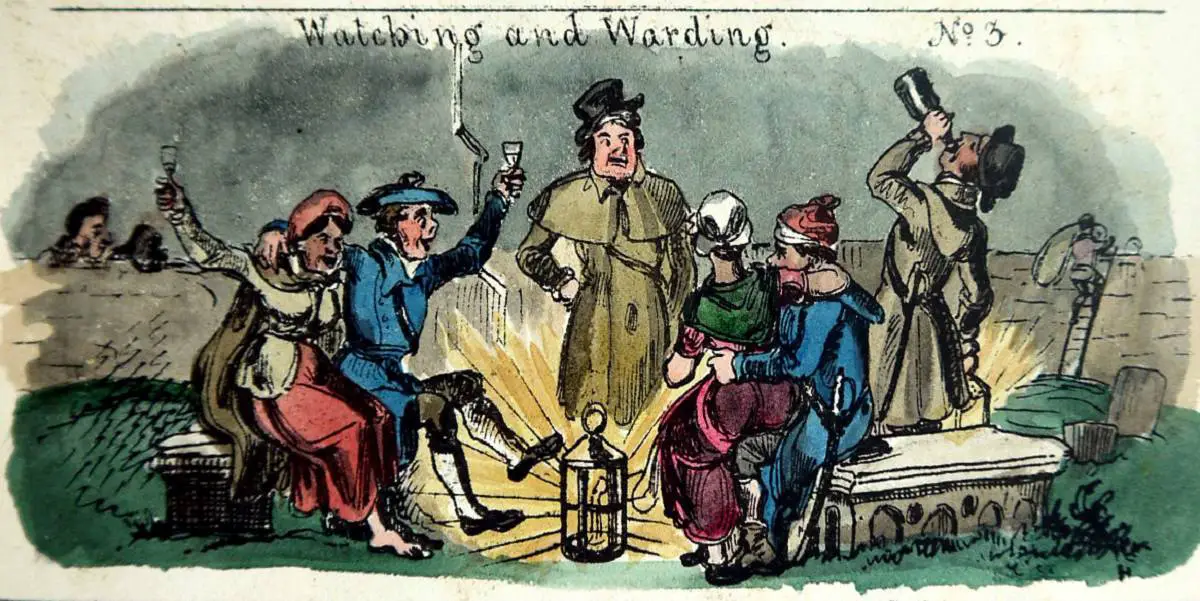
The law allowed the bodies of tramps and paupers and criminals to be used for dissection, but there were never enough bodies to go around, hence the ghoulish trade in dead human flesh.
Potter’s Fields and asylum and poor-house cemeteries were well-tapped sources of bodies and it was not uncommon for officials to pretend to bury these unclaimed corpses, get paid for the service by local governments, and then sell the bodies for study.
It took the Ohio Legislature until 1881 to pass the anatomy act sanctioning the acquisition of unwanted bodies for the medical schools.
Even after the act was passed, body snatching went on until the first decade of the 20th century
American Body Snatching Prevention
Several methods were used to discourage body snatchers. A fresh corpse was essential—so bodies were held in vaults until too decayed to dissect.
Sometimes stones were placed over graves or cement was poured over a coffin to discourage diggers. Family members took turns standing vigil over graves and guards were hired, although they could be bribed to look the other way.
The Coffin Torpedo
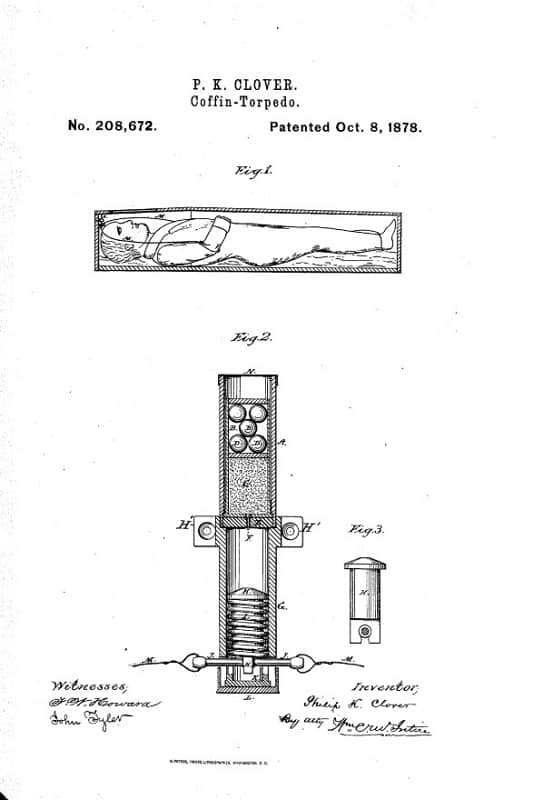
Deadly devices were also invented. An Ohio artist named Phil. K. Clover invented a “coffin torpedo.”
GOOD NEWS FOR THE DEAD
Mr. Phil. K. Clover, the artist, has invented a torpedo designed to make the robbery of graves a hazardous and unpopular business, and has taken the necessary steps to procure letters patent. The torpedo may be briefly described as a miniature needle-gun.
It is about six inches long, and is divided into two pieces.
The grave-robber may dig to the coffin, and remove the covering thereof, but when he attempts to move the body he pulls the chain and sets off the spiral spring, which strikes the needle with great force, explodes the cap, and sends buckshot or ball in an upward direction.
The grave-robber, stopping over his work is liable to be shot with deadly effect….
Columbus (O.) Journal. Iowa Liberal [Lemars, IA] 31 July 1878
It is impossible to know how often these devices were deployed, but here is an incident from 1881.
Body Snatching in Knox County
A more serious incident was reported near the village of Gann [Knox County] about the same time.
When three men attempted a grave robbery, they struck a torpedo which had been planted near the bottom of the grave, instantly killing one of the men and breaking a leg of one other. The third party, who was keeping a watch, succeeded in getting his companions into a sleigh, taking flight, and evading arrest.
Body-snatchers or “Resurrectionists” as they were sometimes dubbed by the press, had a sort of folk-hero reputation. Many people knew that medical schools required bodies for training new doctors and thought that the laws should be changed.
Law enforcement officials and cemetery guards could be bribed to look the other way.
‘Old Cunny’ : The King Of The Ohio Body Snatchers
The king of the Ohio body snatchers was a man named William Cunningham, AKA “Old Man Dead,” ‘The Prince of Ghouls,” or “Old Cunny.”
The papers were full of colourful stories of Old Cunny and his cunning exploits. Cunningham was born in Ireland, perhaps around 1807.
He and his wife Mary were described two decades after his death as:
“a big, raw-boned individual, with muscles like Hercules, and a protruding lower jaw, a ghoul by vocation, a drunkard by habit and a coward by nature. His wife was a bony, brawny, square-jawed Irish woman, with a mouth like an alligator. Both had a tremendous appetite for whiskey.” [1]
The year before his death, the Cincinnati Enquirer sketched an unsavoury portrait:
To have ever seen Cunningham is to retain him in your memory for a life-time, for that ponderous yet gaunt frame; that villainous bald head, fringed about with silvery gray, that strong marked face, corrugated with age and crime, a canine mouth, from the corners of which slowly trickles the generous saliva, impregnated with the juices of nicotine, and that shuffling gait, caused by a broken leg received from a charge of buckshot, constitutes a tout ensemble sufficiently striking to make a very vivid impression.
The Cincinnati [OH] Daily Enquirer 19 January 1870
The Life of A Body Snatcher
While Cunningham was clever in evading the authorities, he was also vindictive, terrifying police officers and children alike with threats that he would “get them” eventually and sell their corpses to the medical school.
When some medical students offended him, it was said that he delivered newly-buried—and still contagious–smallpox victims to the dissecting room. [2]
The life of a resurrectionist was not an easy one.
On one occasion, while on their way to perform some resurrecting, Cunny and his two helpers stopped at a saloon in Carthage for liquor refreshments.
It was near midnight and their behaviour aroused the suspicions of the patrons sufficiently so that they organized a posse to follow them. [The original version says that Cunny was recognized.]
They were stalked to a cemetery and while in the process of digging for two subjects, shots were fired at them. The only one who stood his ground was Cunny and he refused to elevate his hands when so ordered.
One of the members of the posse, with gun aimed at him, pulled the trigger, but it failed to go off. On hearing the click, Cunny decided he had had enough and gave up, pleading for his life
Human Dissection: Its Drama and Struggle, Arthur M. Lassek, 1958
Switching A Dead Body In Cincinnati
The classic story of “How ‘Old Cunny’ Lost a ‘Stiff,’” was particularly widely syndicated.
“Old Cunny” had got news of a particularly good subject and decided to risk body snatching on a moon-lit night in the Catholic cemetery near Spring Grove Cemetery in Cincinnati. He left his new partner ‘Bill’ to keep watch and soon came back with a corpse in a sack.
Knowing he would be stopped by the police, Old Cunny positioned the body, dressed in a black suit, on the seat between him and the assistant. He slipped a hat onto the corpse’s head and off they went.
As “Old Cunny” had expected, they were stopped by a police officer, who did a cursory inspection of the wagon and exchanged pleasantries with the old man.
Stopping at a saloon on the way home for refreshment, it wasn’t long before the body on the front seat aroused suspicion. While Old Cunny was taking refreshments, a local man spoke to who he presumed was the driver of the wagon.
Receiving no reply, it became obvious that the ‘stiff’ on the seat was in fact a corpse. No response and a hat pulled down low was a dead giveaway.
The body was swiftly removed to a nearby street car and the man swapped places with the corpse.
“Cunny” and “Bill” were soon seated on each side of the supposed “Stiff,” and away they started for the city.
While passing through the covered bridge, at an easy trot, “Bill” took hold of the arm of the “corpse” to prevent it being jolted off, and turning to the “old man,” said: “I say, Cunny, this ‘ere stiff is thawing; his arms are quite limber.” “O shut up, Bill, you’re scared. I guess that last punch got into your head.”
After a drive of a few moments in silence, Bill’s hands slipped down on the hands of the supposed corpse, when he said in a startled whisper, “I say old man, this stiff is getting warm; did you ever know one of ‘em to come to life again?”
“Shut up, I tell yer,” said Cunny, “he’s too dead ‘ter skin.” And turning half round as if to give proof to his words, he raised the rim of the hat on the stiff.
The joker finding he was likely to be discovered and wishing to test “Old Cunny’s” pluck, gave vent to a hollow groan.
“Great God!” said Bill and with a yell of horror jumped off the wagon on the left side and broke for the hill, as if the ___ corpse was after him….” Old Cunny” followed.
“The corpse (?) took quiet possession of the lines, and drove leisurely into town and left the “old man’s” team at the first police station, claiming he had found it on the avenue without a driver.
Athens [OH] Messenger 8 February 1877
(This sound suspiciously familiar to a post on my blog already. The tale of ‘Dandy Jim’, that took place in Eckford in the Scottish Borders in 1829. ‘Jim’ also swapped places with a corpse and frighted the body snatchers away).
This wasn’t the only time “Old Cunny” had used the trick of transporting a body by placing it, dressed in old clothes, on the seat beside him in the wagon.
Throughout the journey to the chosen medical school, the subject was treated as if it were alive and drunk. With people within hearing distance, he would talk to the corpse as follows: ”Sit up! This is the last time I am going to take you home when you get drunk. The idea of a man with a family disgracing himself in this way” [3]
The Resurrectionists Trade
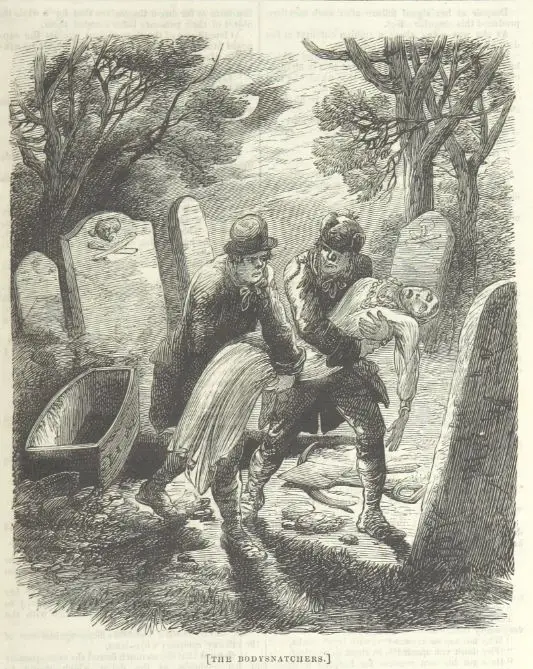
Old Cunny rarely spoke to the gentlemen of the press, a notable exception being when he waxed indignant about a local sexton undercutting his prices.
Fortunately, one of his associates, a Black man named Charles Keaton, gave a frank interview to a Cincinnati Enquirer reporter about what it was like to work with Old Cunny and the details of the resurrectionist’s trade.
“How long have you been at the business?”
“It’s about ‘leven years since I first begun it. I begun with Old Cunny. First he paid me three dollars a head; that was while I was learning. Then he gave me eight dollars apiece, and finally I decided to quit and go by myself, and so he said he’d give me half, and then we worked together on shares till he died .”
“Do you make it a regular business then?”
“I get my living by it in the winter time.”
“What do you get for subjects?”
“We used to get about twenty-five dollars apiece for them, but lately the price somehow has got down to fifteen dollars. The professors buy some subjects for themselves, and they most always get them for about fifteen dollars.”
“How do you usually get the bodies?”
The discussion continues …
“Well, we usually go out two together and go to a burying ground. We go to the ‘poor lots,’ the Potter’s Field, and when we can find any fresh graves we get the bodies.” “You don’t get them from the parts where the better class of people are buried?”
“No. Lots of times Cunny and I have been out together and we’d find a fresh grave on a large lot, and Cunny would always say, ‘Come ‘long, honey, we won’t take that.’ When we’d come through to the part where the graves were close together, and we knew it was the poor lot where the people without any friends are buried, then we’d dig down to the coffin, break it open and put a rope around the neck and pull the body out…
Then, after throwing it out, I generally get down and open the coffin, and take the body by the waist and lift it out to my partner. He takes it, and gen’ly runs a knife down the back and rips the clothes off, and lets ‘em drop down. Then we slip the head into a sack, press the knees up against the chest, and slip the body in and tie the sack. That’s all there is of it.”…
How many do you suppose you have furnished in your experience as a body snatcher?” ” Maybe five hundred. I got about forty last winter, but it wasn’t a very good winter for it though”
The Cincinnati [OH] Enquirer 4 June 1878
The Death Of ‘Old Cunny’
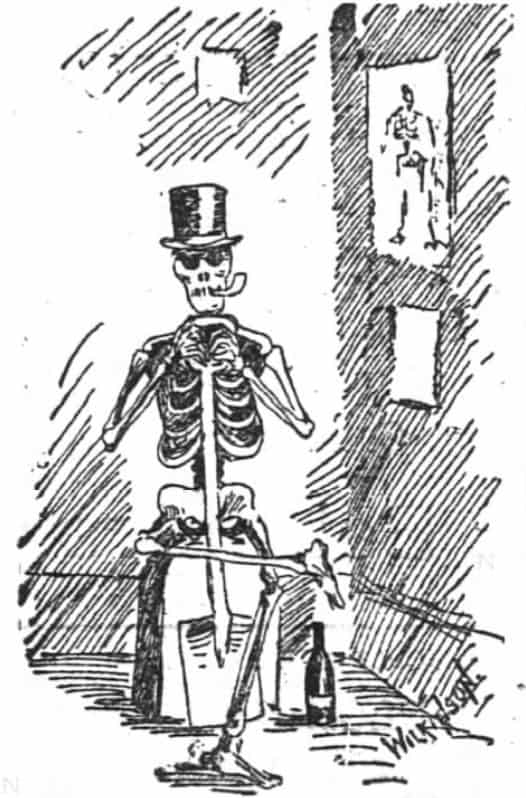
As Charles Keaton notes, it was the poor, the people of colour, and the friendless who ended up on the dissection table.
A similar fate awaited Old Cunny. When he died November 2, 1871, at the age of [roughly] 64, some say of heart disease, others, of gangrene, there was no funeral; his body was turned over to the Medical College of Ohio.
The old rogue had sold his own body to the College for $50, years before. Some stories say he sold himself to multiple medical schools as one final joke. Mrs Cunningham, a strapping Irishwoman who could match her husband drink for drink, got another $5.00 out of the College for the corpse.
The local papers paid tribute to Old Man Dead by noting:
It was he that for the past few years kept all of our city medical colleges supplied with subjects, as also large numbers of colleges throughout the West. He has often been known to resurrect as high as one hundred bodies during a single season. It was in this manner that the old man supported himself, averaging at least $20 per body… His death will certainly make one victory for the grave, and the body will ere long adorn a dissecting table in some one of our medical institutions.” Cincinnati Times, 21st.
The old resurrectionist did return to earth–after a fashion.
After his cadaver was cut up and the bones cleaned, Old Cunny’s skeleton was wired and placed in a glass case, posed, hat on skull, sitting on a tombstone with a pipe in his jaws and a spade in one bony hand.
The skeleton was on display at least until 1954, but no one at the Medical College has been able to say what became of it after that.
Like so many of the corpses that he had supplied to the dissection rooms of the Medical College of Ohio, Old Cunny was, in the end, just another “stiff,” consigned to an anonymous grave.
References
[1] Daniel Drake and His Followers, Otto Juettner (Cincinnati, OH: Harvey Publishing Company, 1909)
[2] Daniel Drake and His Followers, Otto Juettner (Cincinnati, OH: Harvey Publishing Company, 1909)
[3] Body snatching in Ohio during the nineteenth century. Linden F. Edwards, 1955
The Victorian Book of The Dead
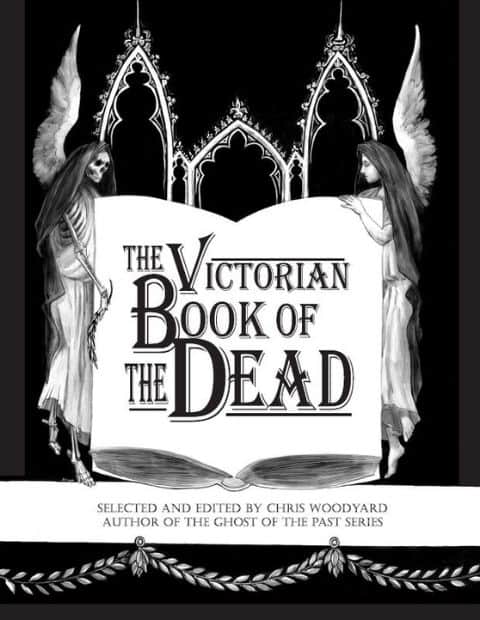
You can also buy Chris’ own book (not used here) The Victorian Book of The Dead which I can also thoroughly recommend.
With chapters such as Crape: Its Uses and Abuses, and Grave Errors: Exploding Corpses, Flaming Formaldehyde, and Other Funeral Fatalities, what’s not to like!
You can get your own copy via Amazon.co.uk or via Chris directly from her website, The Victorian Book of The Dead

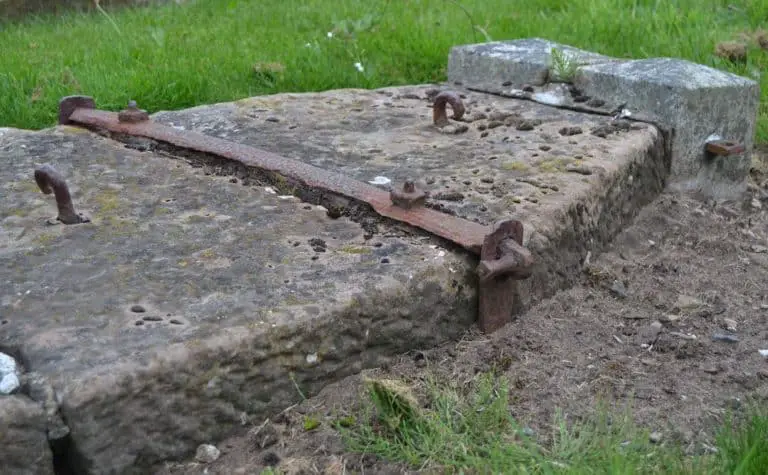

![‘[A] Miraculous Circumstance’](https://mymacabreroadtrip.com/wp-content/uploads/2020/04/Rawlinson-Resurrection-Men-via-Wellcome-Library-Diggingup1800-768x934.jpg)


